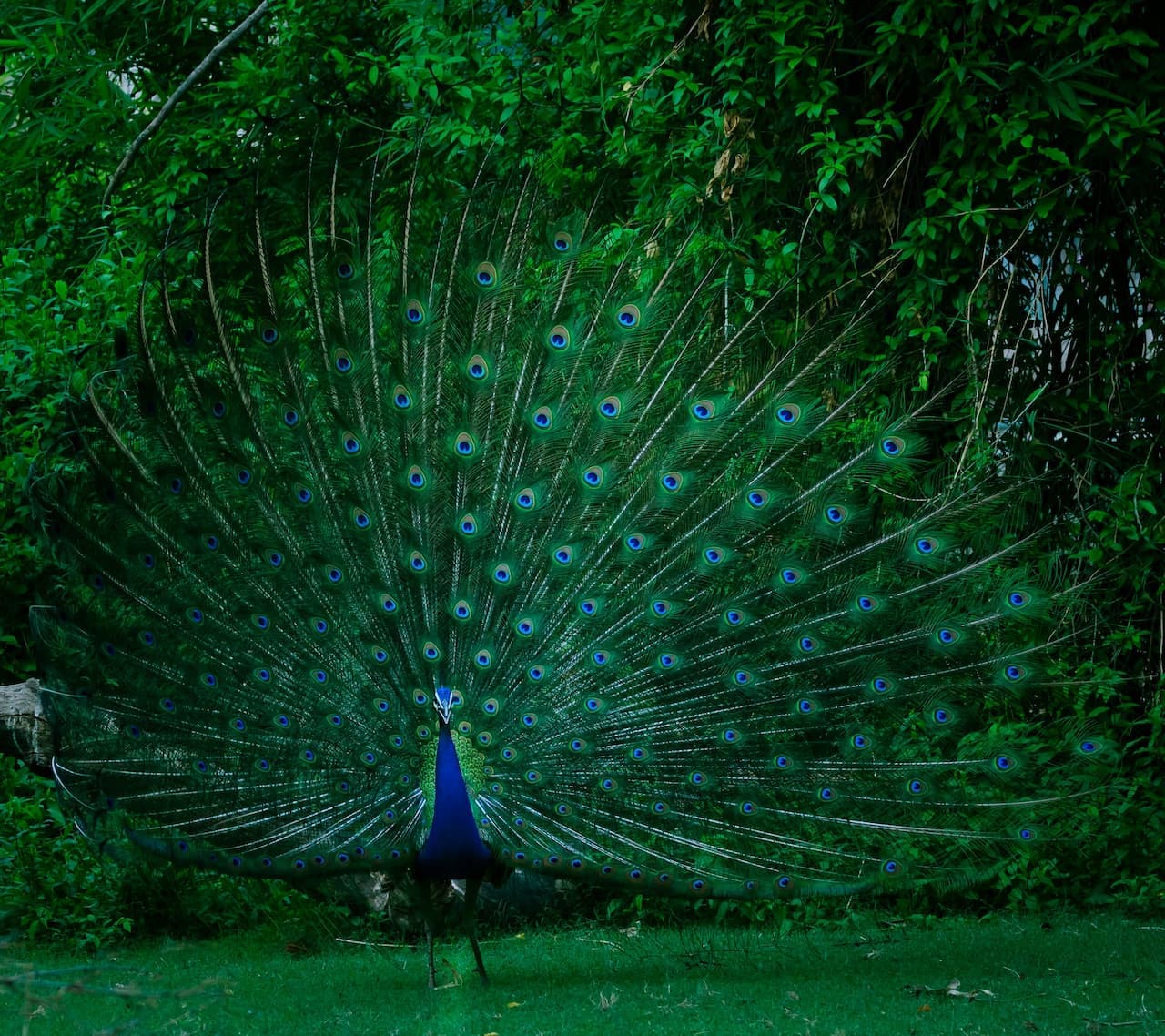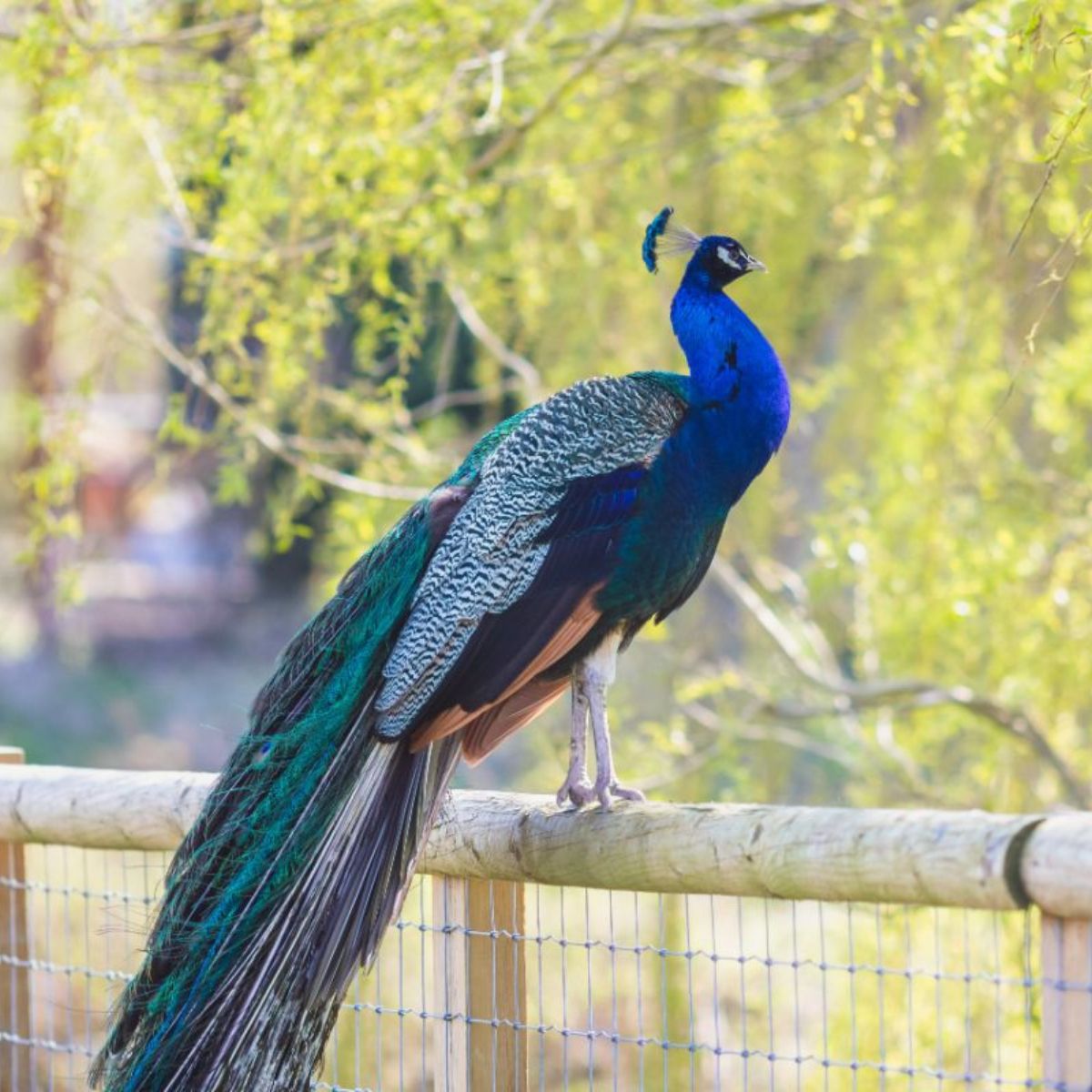Have you ever wondered why peacocks spread their feathers in such a mesmerizing display? This stunning behavior, often associated with beauty and elegance, has intrigued scientists, nature enthusiasts, and casual observers alike. The peacock's feather display is not just a random act but a deeply rooted evolutionary trait that serves multiple purposes. Understanding this phenomenon not only satisfies our curiosity but also sheds light on the intricate balance of nature. In this article, we will explore the reasons behind this iconic behavior and delve into the science, history, and cultural significance of peacocks and their feathers.
Peacocks, the male counterparts of the peafowl species, are renowned for their iridescent plumage and elaborate courtship displays. Their feathers, adorned with eye-catching patterns and vibrant colors, play a crucial role in their survival and reproductive success. From attracting mates to deterring predators, the act of spreading their feathers is a multifaceted strategy that has evolved over thousands of years. This article will provide you with a comprehensive understanding of why peacocks spread their feathers and what it means for their ecosystem.
Whether you're a wildlife enthusiast, a student of biology, or simply someone fascinated by nature's wonders, this article will guide you through the fascinating world of peacocks. We'll cover everything from the biological mechanisms behind their feather display to its cultural symbolism and ecological importance. By the end of this article, you'll have a deeper appreciation for this extraordinary behavior and its significance in the natural world.
Read also:Sophie Rain Unveiling The Life And Career Of A Rising Star
Table of Contents
Biography of Peacocks
Peacocks, scientifically known as Pavo cristatus, are native to the Indian subcontinent and are considered one of the most iconic birds in the world. They belong to the pheasant family and are known for their striking appearance and unique behaviors. Below is a detailed table summarizing the key characteristics of peacocks:
| Attribute | Details |
|---|---|
| Scientific Name | Pavo cristatus |
| Family | Phasianidae |
| Habitat | Forests, grasslands, and agricultural areas |
| Diet | Omnivorous (seeds, insects, small reptiles) |
| Lifespan | 10-25 years in the wild |
| Distribution | India, Sri Lanka, and introduced populations in other countries |
The Science Behind Feather Display
The peacock's feather display is not just a random act of beauty but a scientifically driven behavior. To understand why peacocks spread their feathers, we must first explore the biological mechanisms behind this phenomenon.
Evolutionary Perspective
From an evolutionary standpoint, the peacock's feathers are a classic example of sexual selection. Charles Darwin first proposed the concept of sexual selection to explain traits that do not necessarily aid survival but enhance reproductive success. The vibrant colors and intricate patterns of peacock feathers are believed to have evolved as a result of female peafowl (peahens) preferring males with more elaborate displays. Over generations, this preference led to the development of the extravagant plumage we see today.
Anatomy of Peacock Feathers
Peacock feathers are unique in their structure and composition. The feathers contain microscopic structures called melanin rods, which interact with light to produce the iridescent colors. These colors are not pigments but are created through structural coloration, where light is refracted and reflected. This phenomenon is what gives peacock feathers their shimmering, metallic appearance.
Courtship and Mating
One of the primary reasons peacocks spread their feathers is to attract mates. This behavior is a critical part of their courtship ritual and plays a significant role in their reproductive success.
The Role of Feather Display in Mating
During the breeding season, male peacocks perform elaborate dances while spreading their feathers to catch the attention of peahens. The larger and more colorful the display, the higher the chances of attracting a mate. Studies have shown that peahens prefer males with longer trains and more eyespots, as these traits are often associated with better genetic quality and health.
Read also:Shubhashree Sahu A Comprehensive Guide To Her Life Career And Achievements
Behavioral Patterns During Courtship
Peacocks engage in a series of behaviors during courtship, including:
- Vibrating their feathers to produce a rustling sound.
- Performing a dance that involves strutting and turning in circles.
- Positioning themselves in areas with good visibility to maximize their display.
Defense Mechanisms
While the primary purpose of spreading feathers is courtship, peacocks also use this behavior as a defense mechanism against predators.
Intimidation Through Display
When threatened, peacocks can spread their feathers to appear larger and more intimidating. This sudden expansion of their plumage can startle predators and give the peacock a chance to escape. Additionally, the eyespots on their feathers may confuse predators, making it harder for them to focus on the bird itself.
Camouflage and Distraction
In some cases, peacocks use their feathers to create a distraction. By spreading their feathers and moving them in unpredictable patterns, they can draw attention away from their body, allowing them to flee unnoticed.
Cultural Significance
Peacocks have held a special place in human culture for centuries, symbolizing beauty, royalty, and spirituality in various traditions.
Symbolism in Ancient Cultures
In Hindu mythology, the peacock is associated with the god Kartikeya and is considered a symbol of immortality and protection. Similarly, in Greek mythology, the peacock was sacred to Hera, the goddess of marriage and family, and its feathers represented the "eyes" of the stars.
Modern-Day Representations
Today, peacocks are often used in art, fashion, and design to convey elegance and sophistication. Their feathers are also popular in home decor and are believed to bring good luck and prosperity in some cultures.
Ecological Impact
Peacocks play an essential role in their ecosystems, contributing to biodiversity and maintaining ecological balance.
Seed Dispersal
As omnivores, peacocks consume a variety of seeds, fruits, and insects. In the process, they help disperse seeds across their habitat, promoting plant growth and diversity.
Pest Control
Peacocks feed on insects and small reptiles, helping to control pest populations in their environment. This natural pest control benefits both the ecosystem and local agricultural communities.
Common Misconceptions
Despite their widespread recognition, there are several misconceptions about peacocks and their feather displays.
Myth: Only Peacocks Have Feathers
While peacocks are famous for their feathers, peahens also have feathers, though they are less colorful and elaborate. The difference in plumage is a result of sexual dimorphism, where males develop traits to attract mates.
Myth: Peacocks Spread Their Feathers to Show Off
While showing off is one aspect of their behavior, peacocks spread their feathers for various reasons, including mating, defense, and communication.
Peacock Conservation
Although peacocks are not currently endangered, their populations face threats from habitat loss, hunting, and climate change.
Conservation Efforts
Several organizations are working to protect peacocks and their habitats. These efforts include creating wildlife reserves, enforcing anti-poaching laws, and raising awareness about the importance of biodiversity.
How You Can Help
Individuals can contribute to peacock conservation by supporting wildlife organizations, avoiding products made from peacock feathers, and promoting sustainable practices that protect natural habitats.
Interesting Facts About Peacocks
- Peacocks can fly short distances despite their large size and elaborate feathers.
- The eyespots on a peacock's feathers are called "ocelli."
- Peacocks are most active during the early morning and late afternoon.
- A group of peacocks is called a "party" or "muster."
Conclusion
The question "Why do peacocks spread their feathers?" has a multifaceted answer rooted in biology, evolution, and ecology. From attracting mates to defending themselves, this behavior serves multiple purposes that highlight the complexity of nature. By understanding the science and cultural significance behind peacock displays, we gain a deeper appreciation for these magnificent creatures and their role in the ecosystem.
If you found this article informative, please share it with others who might be interested in learning about peacocks. Leave a comment below to share your thoughts or ask questions, and explore more articles on our site to continue your journey into the wonders of the natural world.

